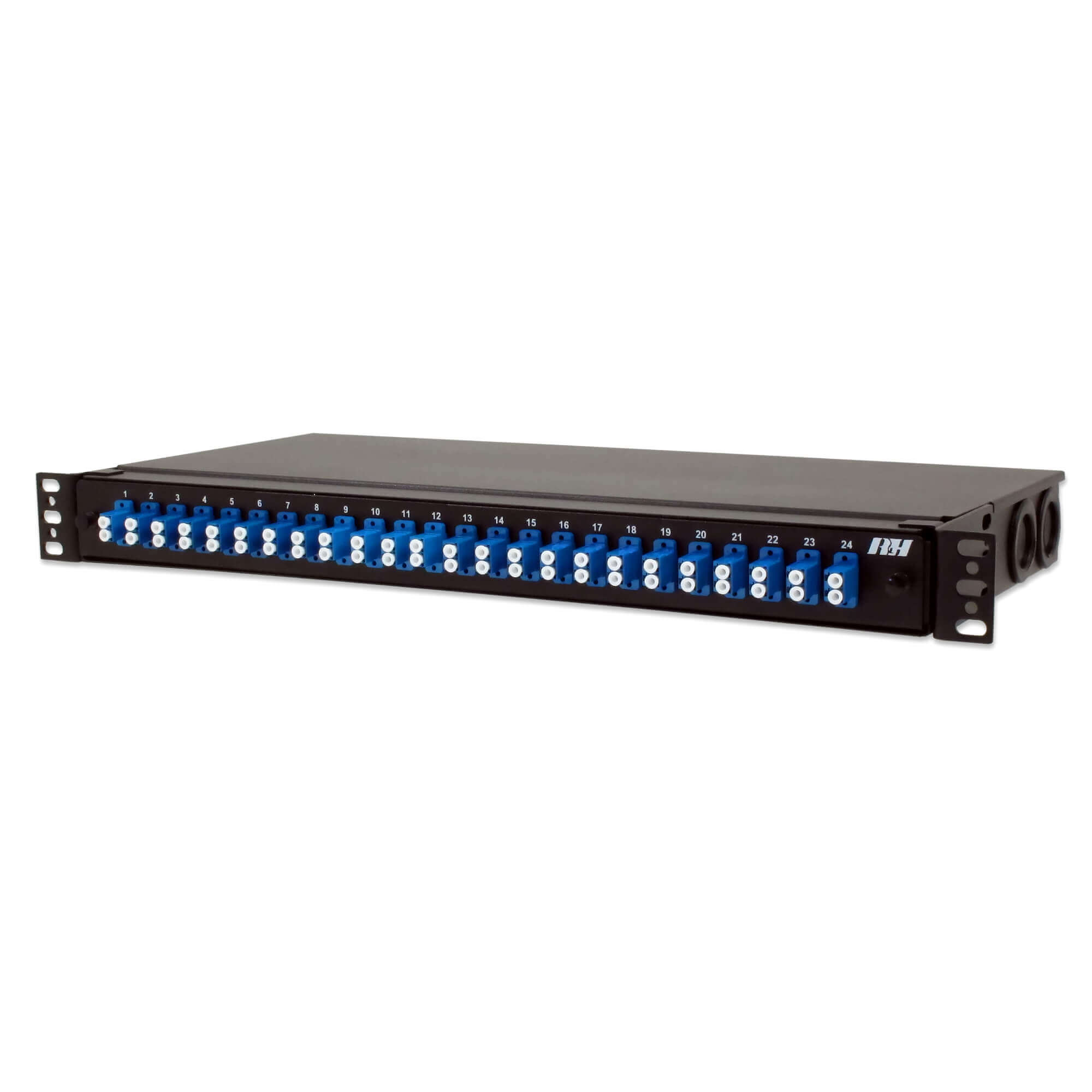Contents
Source: Telegärtner
The Intricacies of Fiber Patch Panels
Fiber patch panels are essential components in the management of fiber-optic networks, providing structured and organized connectivity solutions. They are designed to house fiber-optic connectors and are used in various applications, from data centers to industrial settings, ensuring efficient cable management and connectivity.
Types of Fiber Patch Panels
Fiber patch panels come in several formats to cater to different installation requirements. Here, we explore the most common types:
Wall-Mount Patch Panels
Wall-mount patch panels are installed on interior walls, making them ideal for indoor applications. They offer a compact and adaptable solution for managing fiber cables. For outdoor applications, specially sealed enclosures are available to protect against harsh environmental conditions, such as moisture and dust.

Rack-Mount Patch Panels
These panels are designed to fit into standard 19-inch or 23-inch racks. A 1U panel typically accommodates 24 adapters in a single row, but larger formats (2U and above) can house hundreds of fiber cables. Rack-mount panels are widely used in high-density environments like data centers due to their scalability and efficient space utilization.

DIN-Rail Patch Panels
DIN-rail patch panels are mounted on DIN rails and are commonly used in industrial environments. These panels are suitable for applications requiring fewer connectors and offer a robust solution for harsh settings.
Key Features and Accessories
Fiber patch panels are equipped with various features to enhance their functionality and performance:
- Internal Splice Trays: These trays organize and protect fiber splices, ensuring orderly management within the panel.
- Cable Management Accessories: Items like rings and clips help keep fibers organized and prevent tangling.
- Sliding Patch Panels: These panels have a front section that can be opened to grant access to the interior, facilitating maintenance and adjustments.
- Removable Adapter Plates: These plates allow for easy changes in the type or configuration of adapters.
- Lockable Doors: Providing security and reducing dust ingress, lockable doors are crucial for sensitive environments.
- Sealed Enclosures: For harsh environments, these enclosures offer enhanced protection against environmental factors.
Applications in Telecom and Data Centers
In telecommunications and data centers, fiber patch panels play a pivotal role. They manage numerous incoming fiber cables, which are not directly connected to processing devices but are routed through patch panels. This setup allows for flexible connectivity and easy reconfiguration.
In large facilities, smaller sets of patch panels may be distributed throughout the building to manage long-distance connections efficiently.
Integration with Devices
Fiber patch panels can also be integrated into the user interfaces of various devices, providing fiber-optic connections alongside other interfaces like electrical connections and control systems. This integration is essential for connecting to fiber amplifiers and signal processing equipment.
Conclusion
Fiber patch panels are indispensable in modern fiber-optic networks, offering organized and scalable connectivity solutions. Understanding their types, features, and applications can significantly enhance network management and efficiency.

Source: RLH Industries
Feel free to comment your thoughts.


